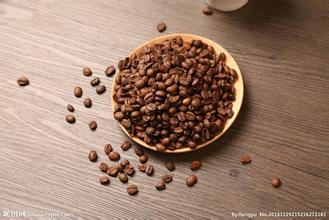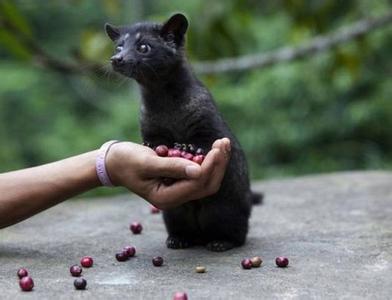Flavor description of 19-mesh emerald coffee beans introduction of varieties produced by grinding scale
Flavor description of 19-mesh emerald coffee beans introduction of varieties produced by grinding scale
After picking the beans, the coffee farmers will first remove the peel and pulp in the producing area, simply wash the wet pods, ferment the wet pods for 10-12 hours, and then manually remove the pectin and floating matter in the water tank. After one or two days of exposure, although the moisture content of raw beans is still 30%-50%, that is, peeling off the seed shell before continuing drying, in order to shorten the drying schedule of raw beans. After about 2 days of drying, the moisture content of raw coffee beans can be reduced to 12.13%, then packed in gunny bags and stored in a cool and dry warehouse. After receiving the order, the raw beans are green and full, glittering and translucent, just like an emerald, so the coffee in this producing area is also called emerald Mantenin.
[about Lake Tawa]
Lake Tawa is located in the Gayo mountains north of Aceh province in Sumatra. The humid tropical rain forest climate is rich in rainfall and fertile volcanic soil. The cultivation of coffee had a unique advantage, but it was not planted until 1924 because of its remote location and inconvenient transportation.
Traditionally, we refer to coffee beans from Sumatra as Mantenin, but this is not accurate. In fact, what we call Mantenin generally refers to coffee produced in the Lindong Mountains around Lake Toba in north-central Sumatra, 9-1200 meters above sea level in the southwest, with Batak as the main production. If the beans in the two producing areas have tried children's shoes, you can clearly feel that the coffee beans in the two Great Lakes regions are different.
Country: Indonesia
Grade: 19 items +
Producing area: Tawa Lake area, Aceh Province
Treatment method: traditional wet planing method
Altitude: 1200-1600 m
Variety: Kaddura, Katimo, Tibika, sidikalong
Flavor: herbal fragrance, baked toast, nuts, spice pine

Important Notice :
前街咖啡 FrontStreet Coffee has moved to new addredd:
FrontStreet Coffee Address: 315,Donghua East Road,GuangZhou
Tel:020 38364473
- Prev

Introduction to the Grinding scale of the Variety producing area by the method of describing the Flavor of Yejia Fischer Coffee
Yega Fischer Coffee Flavor description method Variety region Grinding scale introduction in February 1977, Lieutenant Colonel Mengistu Hale Maryam (MENGISTU HAILE MARIAM) launched a military coup and served as chairman and head of state of the interim military Administrative Council. In 1979, the Ethiopian Labor people's Party Organization Committee, dominated by soldiers, was established to implement an one-party system. 1984
- Next

Coffee Flavor Curve-Coffee Flavor Round HD
Coffee Flavor Curve-Coffee Flavor Wheel HD Whether new beans or old beans, all have their own unique roasting curve, you must accurately judge the next bean and the bean time, master the best flavor. In the process of recording the roasting curve, carefully blindly taste each batch of roasted beans, record them, accurately grasp the key elements, and easily grasp the taste that coffee beans should have! Remember each batch.
Related
- What brand of black coffee is the most authentic and delicious? what are the characteristics of the flavor of the authentic Rose Summer Black Coffee?
- Introduction to the principle and characteristics of the correct use of mocha pot A detailed course of mocha pot brewing coffee is described in five steps.
- Which is better, decaf or regular coffee? how is decaf made?
- How much is a bag of four cat coffee?
- How about four Cat Coffee or Nestle Coffee? why is it a cheap scam?
- Which is better, Yunnan four Cats Coffee or Nestle Coffee? How about cat coffee? is it a fake scam? why is it so cheap?
- How about Cat Coffee? what grade is a hoax? which instant coffee tastes better, four Cat Coffee, Nestle Coffee or G7 coffee?
- Process flow chart of coffee making-Starbucks coffee making process what coffee tastes good at Starbucks
- The top ten best coffee beans in the world Rose summer coffee or Tanzanian coffee tastes good
- Yunnan four cat coffee is good to drink?_four cat coffee is a big brand? four cat blue mountain coffee is fake?

